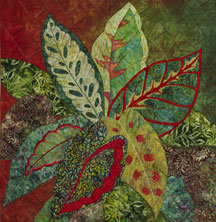Aug. 4, 2011

To use Photostream photos, like this one shot by an ISU graduate student, you'll need to ask the photographer's permission. Photo by Sam Von Gillern.
FAQ for a photo-hungry community
by Diana Pounds
With numerous websites, Facebook pages, newsletters and brochures to feed, we've become a photo-hungry community. In the quest for photos, a common refrain is "Can I use it?"
In the FAQ below, university experts* offer some answers to that question.
Do I need permission to use photos taken at public events?
If you're planning to use the photos as news (that is, for the purpose of reporting on what happened at your event in newspapers, newsletters, magazines or websites), permission isn't necessary. However, if you intend to use photos in promotional or commercial materials, you need written permission from all individuals who can be identified in the photos.
What about permissions for group shots and crowd shots?
If individuals aren't easily identified, you don't need to obtain individual permissions.
We don't always know how a photo will be used later. And getting permissions can be difficult or time-consuming. Any advice?
Get signed permissions if:
- You're shooting for promotional or commercial purposes
- There's a good chance the photo later may be used in additional materials
- There's a chance you may later loan out the photos for use by other departments or third parties
What do I need to include on the permission form?
A sample authorization and release form is available as a Word document or PDF file on the university marketing website. Be sure to maintain a file of the signed authorizations you collected for reference.
Are there special rules for using the Art on Campus Collection on the website or in publications?
Even though the public art collection belongs to Iowa State, public work of art or object copyright may be retained by artists. Publishing the art of a living artist on a web page, newsletter or brochure requires the artist and University Museums' permission. To get permission, contact University Museums' Lynette Pohlman or Allison Sheridan.
Additionally, the photo must credit the artist. On a web page, it's sufficient to identify the art by title and artist, like this: "Bravo III by Bill Barrett." If space is limited, the credit and other details about the art can be in rollover text or asterisked elsewhere on the page.
On a brochure, the credit must include title, artist, collection
and institution. It should resemble this:
"Bravo III by Bill Barrett. In the Art on Campus Collection,
Iowa State University, Ames, Iowa."
If I want to use one of the photos from the ISU Photostream site on a website or publication, is email permission from the photographer sufficient to use his or her photographic image?
Yes, an email permission can suffice as long as the email communication sufficiently identifies:
- The photographic image that you desire to use,
- The purpose for which you intend to use it and
- That the permission is provided by the owner of the photographic image
Any advice about posting or obtaining photos from websites like Flickr?
If you're the poster, be sure the photo belongs to you and that you have the necessary permission from your subject. If you're using a photo, read the photographer's Creative Commons license to ensure that you're allowed to use the photo.
Any advice on how to avoid being sued?
Get permissions from subjects whenever possible. Don't use photos that embarrass or ridicule people.
Does this photo help me communicate my message?
When you're looking for art, this might not be the first question that comes to mind. But director of university marketing Carole Custer says it should be. Every time you pick a photo, she advises you to ask if it will help you reinforce your key message.
Where can I find more information on using photos in my materials?
Check the guidelines on the university marketing site.
*Sources for this article were Keith Bystrom, associate counsel in the office of university counsel; University Museums' director Lynette Pohlman and program coordinator Allison Sheridan; and Carole Custer, director of university marketing.
